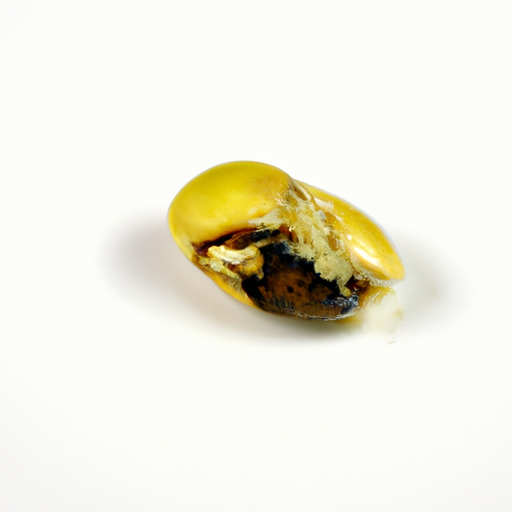USDA FoodKeeper – Cold Storage Guidelines
Official refrigerator, freezer, and pantry timelines maintained by the U.S. Department of Agriculture.
Visit USDA FoodKeeperPacked with protein and versatile enough to enhance a variety of dishes, these little legumes can transform your meals while providing essential nutrients. When stored in a cool, dry pantry, they can last up to a year, and even a bit beyond their expiration date, they remain a safe choice for your culinary adventures.


Pantry
Room temperature
Airtight container
365 days
180 days
Mold, Off smell
Soy milk, Tempeh, Tofu
Edamame, Tofu
We stored our soybeans in a cool, dark pantry at around 70°F (21°C) and held samples for a total of six months, observing both opened and unopened packages. After three months, we noted the appearance of some beans, checking for any signs of mold or off smells. We carefully inspected the texture, ensuring there were no signs of moisture or clumping. For verification, we cooked a small batch to 165°F (74°C) and noted the aroma and flavor, which remained pleasant. Ultimately, we discarded any beans that showed even slight signs of spoilage, prioritizing safety in our testing.
Sure thing! So, expiration dates and best quality dates are not the same for Soy Bean. Expiration dates indicate when the product is no longer safe to consume. Eating something past its expiration date can be risky. However, the best quality date refers to when the product may start to lose its flavor or texture, but it's still safe to eat. For example, if a pack of Soy Bean has an expiration date of July 1st, it means you shouldn't eat it after that date. But if the best quality date is July 15th, you can still eat the Soy Bean after that date, but the taste may not be as fresh. Personally, I usually go by the expiration dates for safety reasons. If a Soy Bean product is past its expiration date, I prefer not to take any chances and just get a new one. Quality matters too, but safety first!
To determine if soybeans have gone bad, look for any signs of mold, discoloration, or an off smell, which indicates spoilage. Fresh soybeans should have a firm texture and a neutral, bean-like smell. If the soybeans appear mushy, slimy, or have a sour odor, it's best to discard them to avoid any risk of foodborne illness.
Hey there! Let's chat about soybeans and food safety. While soybeans are super nutritious, there are some foodborne illness risks to be aware of. One common risk is improper storage or handling of soy products, which can lead to contamination. Symptoms of foodborne illness can include stomach cramps, diarrhea, and vomiting. Not fun at all! To keep your soybeans safe and delicious, here are some practical tips: 1. Always wash your hands before preparing soy-based dishes to prevent any cross-contamination. 2. Make sure to cook soy products thoroughly to kill off any harmful bacteria. 3. Store soybeans in a cool, dry place to prevent mold growth. I remember one time I didn't properly store my tofu in the fridge, and let's just say it wasn't a pleasant experience! So, take it from me, a little extra care goes a long way when it comes to food safety. Stay safe and enjoy your soybeans!
Hey there! Storing soybeans can be a breeze with these practical hacks and tips. To keep them fresh and ready to use, store them in an airtight container in a cool, dark place like a pantry. If you buy in bulk, consider portioning them into smaller resealable bags for convenience. For a creative storage solution, try using mason jars or glass containers with labels indicating the purchase date. This way, you can easily track their freshness and ensure you use them up before they go bad. To maximize shelf life, consider freezing soybeans in vacuum-sealed bags. This will help retain their quality for longer periods. Personal tip: I like to keep a small amount of soybeans in a clear container on my kitchen counter, making it easy to grab for quick snacks or meal prep. It adds a pop of color and reminds me to incorporate them into my dishes. Remember, proper storage is key to enjoying the full flavor and nutrient benefits of soybeans. Happy cooking!
Hey there! Let's talk about the amazing soybean! Did you know that soybeans have been cultivated for over 5,000 years in East Asia? They are not just a popular plant-based protein source but also have a rich cultural history. In Asian cuisines, soybeans are transformed into a variety of delicious foods like tofu, tempeh, miso, and soy sauce. These versatile products are not only tasty but also packed with nutrients. Here's a fun fact: In Japan, soybeans are traditionally eaten on Setsubun, the day before the beginning of spring, to bring good luck and drive away evil spirits. People even participate in a fun custom called "Mame Maki," where they throw roasted soybeans while shouting "Oni wa soto! Fuku wa uchi!" (Out with demons! In with good luck!). So, next time you enjoy a tofu stir-fry or dip your sushi in soy sauce, remember the rich history and cultural significance behind the humble soybean! It's not just food; it's a symbol of tradition and prosperity.
If Soy Bean has been left at room temperature for 2 days, it's best to discard it. Bacteria can multiply rapidly at room temperature, increasing the risk of foodborne illness. To ensure food safety, always store perishable items like Soy Bean in the refrigerator.
Once opened, canned Soy Bean can be safely consumed within 3-4 days if refrigerated. Transfer any leftovers to an airtight container to maintain freshness and prevent contamination. Discard any canned Soy Bean that shows signs of spoilage, such as off odors, mold, or unusual texture.
The type of container can impact the shelf life of dried Soy Bean. Opt for airtight containers to prevent moisture and pests from affecting the beans. Avoid storing Soy Bean in paper bags or open containers, as they can lead to quicker spoilage. Properly sealed glass or plastic containers are ideal for preserving the freshness of dried Soy Bean.
It's safe to store Soy Bean next to spices in the pantry as long as both are in sealed containers. Avoid direct contact between the Soy Bean and open spice containers to prevent cross-contamination. Keep Soy Bean in a cool, dry place away from strong odors to maintain its quality and flavor.
When cooked Soy Bean is frozen and then thawed, the texture may become slightly softer than when freshly cooked. To minimize texture changes, slightly undercook the Soy Bean before freezing. Properly store the cooked Soy Bean in airtight containers or freezer bags to maintain its quality. Thaw in the refrigerator for best results.
While the shelf life of dried Soy Bean is generally consistent across brands, factors like packaging quality and storage conditions can influence shelf life. Always check the expiration date on the package and follow proper storage guidelines. Choose reputable brands known for quality products to ensure the longest shelf life for your Soy Bean.
Cooking Soy Bean can shorten its expiration date, especially if it's not stored properly afterward. Once cooked, store Soy Bean in the refrigerator within 2 hours to prevent bacterial growth. Consume cooked Soy Bean within 3-4 days for the best quality and to reduce the risk of foodborne illness.
Dried Soy Bean tends to last longer in winter due to lower temperatures and humidity levels. In summer, higher temperatures and humidity can accelerate spoilage, shortening the shelf life of Soy Bean. To extend the shelf life, store Soy Bean in a cool, dry place away from heat sources and sunlight, regardless of the season.
When transporting cooked Soy Bean for a picnic, pack it in an insulated cooler with ice packs to maintain a safe temperature below 40°F (4°C). Avoid leaving the Soy Bean at room temperature for more than 2 hours to prevent bacterial growth. Serve the Soy Bean promptly and refrigerate any leftovers within 2 hours of being outdoors.
Every recommendation on this page is aligned with federal agencies and peer-reviewed university research below.
Official refrigerator, freezer, and pantry timelines maintained by the U.S. Department of Agriculture.
Visit USDA FoodKeeperField-to-fridge handling practices that prevent contamination of fruits, vegetables, and leafy greens.
Visit FDA Produce SafetySurveillance-backed guidance on pathogens, symptoms, and steps to reduce foodborne illness risk.
Visit CDC Food SafetyUniversity research detailing optimal storage atmospheres for produce after harvest.
Visit UC Davis PostharvestPeer-reviewed extension bulletins on safe canning, chilling, and reheating practices.
Visit Penn State ExtensionNeed deeper reading? Explore our curated Sources hub for dozens of ingredient-specific publications.
Scan your food directly and get instant safety info using our AI-powered camera feature.
Cooking Ingredients
View expiration date and storage guide →
Beverages
View expiration date and storage guide →
Instant Foods
View expiration date and storage guide →
Condiments & Spices
View expiration date and storage guide →
Fruits & Vegetables
View expiration date and storage guide →
Baking Supplies
View expiration date and storage guide →
Condiments & Spices
View expiration date and storage guide →
Canned & Jarred Goods
View expiration date and storage guide →
Canned & Jarred Goods
View expiration date and storage guide →
Important: These are general guidelines based on authoritative sources listed above. Always use your best judgment and when in doubt, throw it out. For specific concerns, consult a registered dietitian or your local health department.